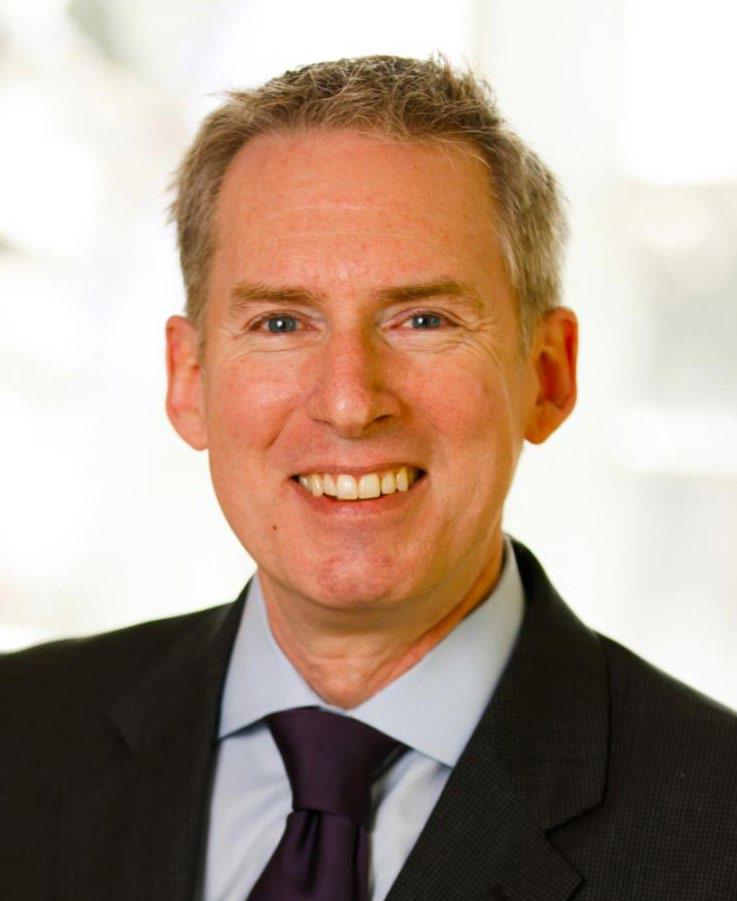
3 minute read
Symbiosis and Golf: Driving Innovation in ALK+ Lung Cancer

We are each made of approximately 20,000-25,000 genes. Each of these genes can have between a few hundred to 2 million DNA bases. Of the innumerable potential combinations of genetic material that make us both similarly human and uniquely individual, just a small handful of errors can lead to serious illnesses. Sometimes we are born with these errors and sometimes we acquire them later in life in response to environmental factors. For Emily Daniels, an acquired break in one of her genes known as the anaplastic lymphoma kinase (ALK) gene caused some of her lung cells to behave abnormally, and ultimately develop into cancer cells. Nancee Pronsati was also affected by this change, which is known to be responsible for nearly one in 20 cases of lung cancer.
After her diagnosis of ALK positive (ALK+) lung cancer, Emily and her family channeled their fears, anxieties, drive and grit into creating a community to treat her disease. In its first two years, the Daniels family’s annual Links for Lungs golf tournament has raised $300,000 from 400 golfers to support ALK+ lung cancer research. When Nancee and her family moved from New York to Denver so she could start treatment at the CU Cancer Center, they teamed up with Emily to contribute an additional $100,000 in funding for research.

Emily Daniels with her parents, Ellen and Frank Rondi (center), and her younger sister, Melissa Rondi, at the Links for Lungs golf tournament
With the support of 400 golfers and 150 additional benefactors whose contributions range from $10 to $10,000, the Daniels and Pronsati families now have an entire community passionate about advancing ALK+ lung cancer research. D. Ross Camidge, MD, PhD, director of thoracic oncology and member of the Thoracic Oncology Research Initiative at the CU Cancer Center, values this philanthropic support to help his team pursue innovative ideas and leading-edge discoveries in personalized medicine. This approach relies on deepening our understanding of how a person’s genetics may predispose them to certain diseases. Advancing this research has made the CU Cancer Center one of the leading centers in the world for ALK+ lung cancer.

D. Ross Camidge, MD, PhD
Led by Dr. Camidge, one study was conducted by the Academic Thoracic Oncology Medical Investigators Consortium (ATOMIC), a group of 14 major American and Canadian cancer centers. The team sought effective treatments for ALK+ lung cancer patients for whom the standard first-line therapy stopped working. They found great success, with a 40 percent positive response rate seen when these patients were treated with a drug called brigatinib. Even though a different, smaller study suggested brigatinib may be ineffective as a second-line treatment, Dr. Camidge and his team chose to dig a little deeper. Philanthropic support has helped them analyze samples from this study to determine who is responding and who is not. “It is only then that we can continue to drive research and treatment that is personalized to individuals. One size really does not fit all,” Dr. Camidge said.
With the right resources, Dr. Camidge and his colleagues have the ability to ask big questions and pursue novel ideas. They have helped to change the standard of care many times over the last few years. “There are so many approaches to explore, and we need to prioritize our time and our resources,” said Dr. Camidge. “Philanthropic support gives us the freedom to move quickly and to respond to the needs of the moment.”

The Pronsatis are helping to make Denver a hub of research, treatment and community for ALK+

Emily Daniels with her children
It is fitting that when asked to give advice to young physicians at the 2017 World Conference on Lung Cancer, Dr. Camidge said, “Look for the question, make it feasible to answer, make the answer important – then you can change the world.” Thanks to the support of the Daniels and Pronsati families and those who are rallying around their cause, researchers like Dr. Camidge are making a meaningful and lasting impact on cancer patients and their families.


Web extras available on the full version










